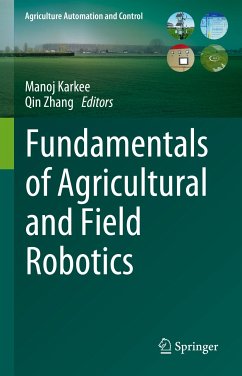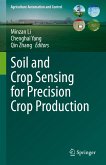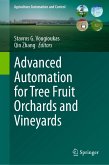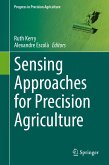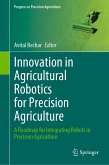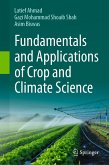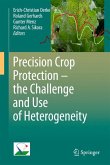Over the past century, mechanization has been an important means for optimizing resource utilization, improving worker health and safety and reducing labor requirements in farming while increasing productivity and quality of 4F (Food, Fuel, Fiber, Feed). Recognizing this contribution, agricultural mechanization was considered as one of the top ten engineering achievements of 20th century by the National Academy of Engineering. Accordingly farming communities have adopted increasing level of automation and robotics to further improve the precision management of crops (including input resources), increase productivity and reduce farm labor beyond what has been possible with conventional mechanization technologies. It is more important than ever to continue to develop and adopt novel automation and robotic solutions into farming so that some of the most complex agricultural tasks, which require huge amount of seasonal labor such as fruit and vegetable harvesting, couldbe automated while meeting the rapidly increasing need for 4F. In addition, continual innovation in and adoption of agricultural automation and robotic technologies is essential to minimize the use of depleting resources including water, minerals and other chemicals so that sufficient amount of safe and healthy food can be produced for current generation while not compromising the potential for the future generation.
This book aims at presenting the fundamental principles of various aspects of automation and robotics as they relate to production agriculture (the branch of agriculture dealing with farming operations from field preparation to seeding, to harvesting and field logistics). The building blocks of agricultural automation and robotics that are discussed in the book include sensing and machine vision, control, guidance, manipulation and end-effector technologies. The fundamentals and operating principles of these technologies are explained with examples from cutting-edge research and development currently going on around the word. This book brings together scientists, engineers, students and professionals working in these and related technologies to present their latest examples of agricultural automation and robotics research, innovation and development while explaining the fundamentals of the technology. The book, therefore, benefits those who wish to develop novel agricultural engineering solutions and/or to adopt them in the future.
This book aims at presenting the fundamental principles of various aspects of automation and robotics as they relate to production agriculture (the branch of agriculture dealing with farming operations from field preparation to seeding, to harvesting and field logistics). The building blocks of agricultural automation and robotics that are discussed in the book include sensing and machine vision, control, guidance, manipulation and end-effector technologies. The fundamentals and operating principles of these technologies are explained with examples from cutting-edge research and development currently going on around the word. This book brings together scientists, engineers, students and professionals working in these and related technologies to present their latest examples of agricultural automation and robotics research, innovation and development while explaining the fundamentals of the technology. The book, therefore, benefits those who wish to develop novel agricultural engineering solutions and/or to adopt them in the future.
Dieser Download kann aus rechtlichen Gründen nur mit Rechnungsadresse in A, B, BG, CY, CZ, D, DK, EW, E, FIN, F, GR, HR, H, IRL, I, LT, L, LR, M, NL, PL, P, R, S, SLO, SK ausgeliefert werden.

